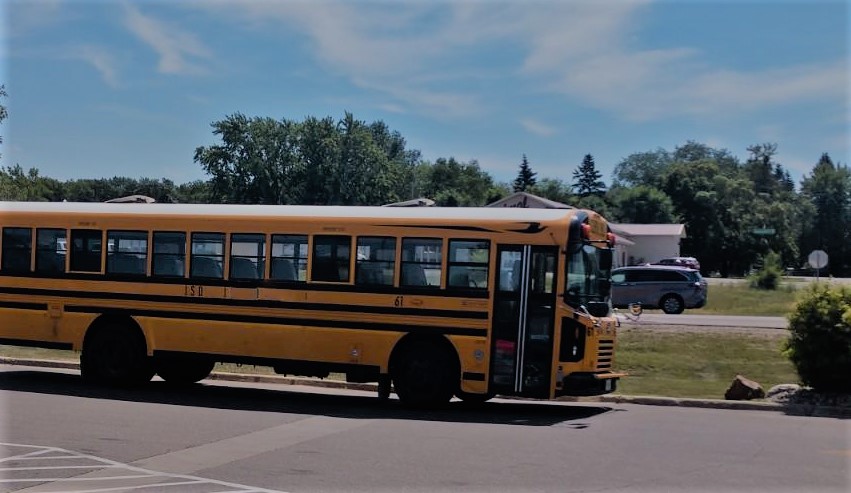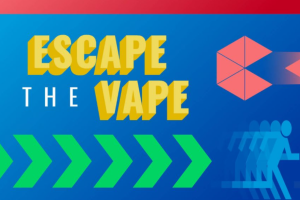(Minnesota) — December 23rd, 2022 — Minnesota students reported healthier behaviors around commercial tobacco, alcohol, drugs, and sexual activity in 2022, while at the same time experiencing an unprecedented amount of long-term mental health, behavioral or emotional problems, according to the 2022 Minnesota Student Survey.
More than 135,000 students completed the survey with nearly all doing so in-person at school between January and June 2022. This group of students reported greater struggles with mental health, such as depression and anxiety, than at any other time in the history of the survey, which began in 1989 and occurs every three years. The 2022 survey saw the continuation of an upward trend, with 29% of students reporting long-term mental health problems compared to 23% in 2019 and 18% in 2016. Long-term means problems lasting six months or more.
Students in 11th grade who said they were identified as female at birth saw an increase in mental health issues in 2022, with nearly half, or 45%, of them reporting long-term mental health, behavioral or emotional problems. That was up from 35% in 2019, 27% in 2016 and 16% in 2013. Students in 11th grade who said they were identified as male at birth, also saw an increase, but reported fewer issues overall, with 20% of male 11th-grade students reporting long-term mental health, behavioral or emotional problems. That was up from 18% in 2019, 13% in 2016 and 9% in 2013.
The survey also allowed students to self-identify their current gender, and about 11% of students in 8th grade or higher identified themselves as transgender, genderfluid, nonbinary, two spirit, unsure or didn’t answer the gender question. Of those students, 63% of them reported long-term mental health, behavioral or emotional problems.
“These results indicate the pandemic fueled and worsened ongoing trends of our teens reporting long-term mental health problems,” said Minnesota Commissioner of Health Jan Malcolm. “It will take more research to know the interplay of all the factors, but it is clear that this is a crisis, and Minnesotans, lawmakers and families need to focus resources and attention in and outside of schools to give our children and their families the connections, supports, stable environments and opportunities they need for a sense of well-being about their lives and futures.”
Another alarming trend was reports of serious suicidal thoughts. Reports of 11th graders having seriously considered suicide at some point in their life jumped to 28% in 2022, compared to 24% in 2019 and 23% in 2013. The numbers are even more troubling for lesbian, gay, bisexual, queer (LGBQ+) and transgender students. LGBQ+ students were about three times more likely than heterosexual students to report seriously considering suicide and four times more likely to attempt suicide than heterosexual students. Transgender students in the 11th grade are most likely to attempt suicide and are more than four times more likely to attempt suicide than their cis-gender 11th grade peers.
There was good news despite the increase in mental health challenges, which can be correlated with risky behaviors. Minnesota students reported engaging in healthier behaviors related to sex, drugs, alcohol, and commercial tobacco, including e-cigarette use. Student smoking rates have fallen to an all-time low across all grades. For example, 2% of ninth graders reported smoking cigarettes in 2022, compared to the historical high of 20% in 2001. Alcohol use, sexual activity and marijuana use also fell.
Though there is still work to be done to reduce rates, students also curbed e-cigarette use, which had skyrocketed between 2016 and 2019. Fourteen percent of Minnesota 11th graders reported using an e-cigarette in the past 30 days, compared with 26% in 2019 and 17% in 2016. Use among eighth graders in 2022 fell back to the 2016 rate of 6%, compared with 11% in 2019.
The percentage of 11th grade students who reported drinking alcohol decreased to 17% in 2022 from 23% in 2019. Marijuana use among 11th graders dropped to 12% in 2022 from 16% in 2019.
“The Minnesota Student Survey continues to provide important data about how students are doing and highlights where we must focus our efforts to support them,” said Minnesota Education Commissioner Heather Mueller. “This year’s survey reveals a clear picture of the continuing need to support student mental and behavioral health. The Department of Education is dedicated to working together with other educators, agencies, and our school communities to better meet the academic, mental health and behavioral health needs of our students so they can be successful in school and beyond.”
Additional findings from the 2022 survey:
Health
- Only 60% of Minnesota students surveyed reported excellent or very good health compared to 65% in 2019 and 69% in the 2016 survey.
- General health status deteriorated and was poorer for female students.
- There was a notable increase in energy drink consumption, especially for female students.
- Fruit and vegetable consumption declined for female students.
- Girls were more likely than boys to skip lunch.
Safety
- 83% of students say they feel safe at home, at school, in their neighborhood and going to and from school compared with 87% in 2019 and 90% in 2016.
- 21% of students surveyed reported being bullied or harassed weekly in at least one way during the last 30 days. About 40% of economically disadvantaged students and 31% of LGBQ+ students reported higher rates of bullying.
- Weekly bullying increased for students in all grades from 2019 to 2022.
- Fifth grade: rose from 21% to 23%
- Eighth grade: rose from 21% to 23%
- Ninth grade: rose from 18% to 19%
- 11th grade: rose from 14% to 17%
- Cyberbullying increased among the lower grades from 2019 to 2022.
- Fifth grade: rose from 18% to 24%
- Eighth grade: rose from 15% to 17%
- Ninth grade: rose from 14% to 15%
- 11th grade: stayed the same at 12%
Education
- Educational engagement continues to decrease for all students surveyed. It dropped from 75% in 2013 to 60% in 2022 for 11th graders. This measure is based on six questions, which relate to caring about how they do in school, whether they pay attention in class, going to class prepared, trying to learn things that interest them, thinking what they learn in school is useful and that being a student is an important part of who they are.
- Female students are missing school at higher rates than male students because they felt very sad, hopeless, anxious, stressed or angry. Among ninth graders, 23% of girls versus 7% of boys had missed school because of these reasons.
- Students across all grades agreed that teachers at their school care about students. Compared to 2019:
- Fifth grade: remained the same at 95%
- Eighth grade: remained the same at 86%
- Ninth grade: remained the same at 86%
- 11th grade: rose slightly from 87% to 88%
- Student feelings of being valued and appreciated decreased for all grade levels surveyed in 2022 compared to 2019.
- Fifth grade: decreased to 67% from 72%
- Eighth grade: decreased to 58% to 65%
- Ninth grade: decreased to 55% to 63%
- 11th grade: decreased to 55% from 61%
“The results of the Minnesota Student Survey are a continued call to action for prioritization of children, youth, and families and coordinated budget and policy development across state government that advances the needs of each and every child and young person in our communities,” said Erin Baily, executive director, Minnesota Children’s Cabinet.
Survey data is available on the Minnesota Department of Education’s Minnesota Student Survey webpages. Summaries of elements of the survey are also available from the MDH Minnesota Student Survey website.
Every three years, Minnesota’s fifth-, eighth-, ninth- and 11th-grade students complete this voluntary, anonymous survey. It includes questions on school climate, bullying, out-of-school activities, healthy eating, emotional health, substance use, connections with school and family, and many other topics. State agencies use the survey to identify important trends and target resources to improve the well-being of the state’s youth. Districts and counties also receive reports to be used at the community level.
The Minnesota departments of Corrections, Education, Health, Human Services and Public Safety collaborate with schools to administer the MSS. The MSS is the primary source of comprehensive data on youth at the state, county and local levels in Minnesota and is the only consistent source of statewide data on the health and well-being of youth from smaller population groups, such as racial or ethnic groups. All school districts are invited to participate in the survey. In 2022, 70% of Minnesota school districts and 135,000 students participated, compared to 81% of districts and 170,000 students in 2019.
If you or a student you know needs free and confidential support, call the 988 Suicide & Crisis Lifeline. In addition, Minnesota’s suicide prevention and mental health crisis texting services are now available 24 hours a day, seven days a week. People who text 741741 will be connected to the Crisis Text Line.





